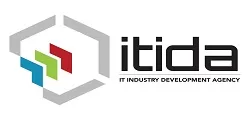Can You Read? (part 2 of 2)
By Sherif Attar
In a world of ever-changing ambiguity and uncertainty, executives have to face two challenges: excellent performance and people development. Where many managers think those endeavours are “competing”, this author believes they are “completing”. GET DOWN TO BUSINESS argues.
Know how to study different types of material
Different types of documents hold information in different places and in different ways, and they have different depths and breadths of coverage. Understanding the layout helps you extract the information you want efficiently.
Magazines and Newspapers
These tend to give a fragmented coverage of an area. They concentrate on the most interesting and glamorous parts of a topic – to boost circulation! As such, they often ignore less interesting information that may be essential to a full understanding of a subject, and they may include low value content to “pad out” advertising.

An effective way of getting information from magazines is to scan the contents tables and turn to interesting articles. If you find an article useful, cut it out and file it in a folder covering that sort of information. Build up sets of related articles that explain the subject.
Reading individual articles
- News Articles are designed to explain the key points first, and then flesh these out with detail. So, the most important information is presented first, with information being less and less useful as the article progresses.
- Opinion Articles present a point of view. Here the most important information is contained in the introduction and the summary, with the middle of the article containing supporting arguments.
- Feature Articles are written to provide entertainment or background on a subject. The most important information is in the body of the text.
Nowadays, you probably read online, too. You save links to these in a bookmark folder for later. Make sure you title folders.
Make your own table of contents
An effective way to combat writer’s structure (as opposed to your interest) is to make up your own table of contents before you start reading. Think what sections or topics you hope to see, and what questions you want to have answered.
Doing this before reading may sound like a strange strategy but it helps you spot holes in the author’s argument and focus on your own questions.
Use glossaries with technical documents
If you’re reading large amounts of difficult technical material, compile a glossary. Keep this beside you as you read. It’s also useful to note down the key concepts in your own words.
Further reading tips
If you read a text that requires a great concentration, tackle it when you have the most energy. Reading at night, in bed, doesn’t work for many people because it makes them sleepy. Read in a place that’s comfortable, free of distractions with good light. Review the information when you’ve finished reading. Write a paragraph that explains, in your own words, what you learned. Often, putting pen to paper can help strengthen your retention.
Adapted from Mind Tools
For questions or suggestions, please send your comments.
Sherif Attar, an independent management consultant/trainer and organisation development authority, delivers seminars in the US, Europe, Middle East and the Far East.
sherifattar@hotmail.com






Discussion about this post